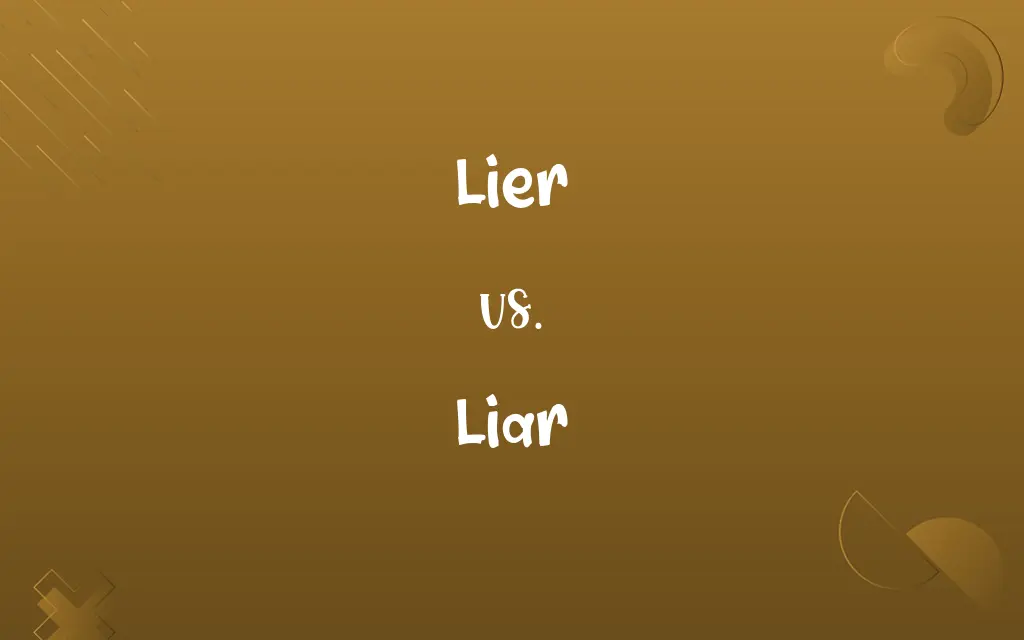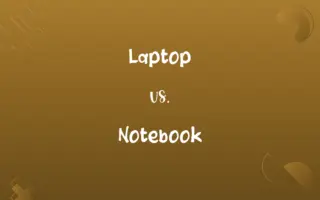Literal Language vs. Figurative Language: What's the Difference?
Edited by Aimie Carlson || By Harlon Moss || Updated on October 11, 2023
Literal language means words are used in their basic, dictionary sense. Figurative language employs figures of speech and implies meanings different from the words used.

Key Differences
Literal language represents straightforward communication, where words and phrases hold their conventional, exact meanings. In the realm of literal language, there's no room for interpretation or reading between the lines. For example, if someone says, "I'm cold," in a literal sense, it directly means that the person is feeling chilly. Here, literal language stands as a pillar that supports clear, unambiguous communication, making interactions and information exchange concise and straightforward.
Contrarily, figurative language dives into a sea of symbolic meanings and imaginative comparisons. It harnesses metaphors, similes, personification, and more to convey messages in a more colorful, imaginative manner. When someone claims, "My heart is a frozen tundra," figuratively, they aren't suggesting a literal, anatomical transformation. Instead, figurative language allows them to express emotional pain or numbness through metaphor, enabling the listener to visualize and feel the speaker's experiences more vividly.
Literal language prioritizes accuracy and sticks to facts. It’s heavily employed in scientific, technical, and academic texts, where precision is paramount. In this domain, misinterpretation due to symbolic or implied meanings could lead to misunderstandings or inaccuracies. Thus, literal language ensures clarity and transparency by eliminating the need for deeper, interpretative analysis of the text.
Figurative language, alternatively, thrives in the world of literature, poetry, and everyday conversations where emotional expressiveness and imaginative comparisons enhance the richness of language. It enables writers and speakers to venture beyond the borders of literal meanings, to bring emotions, visuals, and abstract concepts to life in a relatable, tangible manner. Figurative language, hence, wraps messages in a layer of creativity and depth, inviting the audience to explore beneath the surface level.
In a nutshell, while literal language aligns strictly with exact meanings and facts, providing clear and unambiguous communication, figurative language indulges in symbolic, metaphorical, and imaginative expressions, providing depth, emotion, and vivid imagery in communication.
ADVERTISEMENT
Comparison Chart
Meaning Interpretation
Direct and exact
Symbolic and requires interpretation
Use of Words
Utilizes words in their standard meanings
Employs words in imaginative or non-literal ways
Purpose
Convey facts and actuality
Express ideas creatively and invoke imagination
Expression Style
Straightforward and to the point
Expressive, employing metaphors, similes, etc.
Common Usage
Academic texts, technical writing, factual communication
Poetry, literature, and creative communication
ADVERTISEMENT
Literal Language and Figurative Language Definitions
Literal Language
Literal language means interpreting words in their original, unembellished form.
The sun sets in the west.
Figurative Language
Figurative language enhances writing by implementing imaginative and non-literal expressions.
Her eyes were shining stars.
Literal Language
Literal language communicates exact meanings without implying additional interpretation.
The car is red.
Figurative Language
Figurative language leverages creative expressions to elicit rich imagery and emotional responses.
The world is your oyster.
Literal Language
Literal language involves stating facts and descriptions without employing symbolism or analogy.
He is wearing a blue shirt.
Figurative Language
Figurative language aims to provide deeper meanings and emotional resonance through symbolic words or phrases.
The classroom was a zoo.
Literal Language
Literal language uses words according to their explicitly defined meanings.
The cat is on the roof.
Figurative Language
Figurative language uses metaphors, similes, and other figures of speech to convey abstract ideas.
He has a heart of stone.
Literal Language
Literal language adheres strictly to word meanings without utilizing metaphor or allegory.
She has a book in her bag.
Figurative Language
Figurative language employs words or expressions divergent from their literal interpretation.
Time flies.
FAQs
What is literal language?
Literal language refers to using words in their standard, explicit meanings without symbolism.
Can you provide an example of literal language?
"The sky is blue."
In what contexts is literal language typically used?
It’s often used in scientific texts, legal documents, and instructional writing for clarity and accuracy.
Could you illustrate figurative language with an example?
"Breaking the ice," metaphorically means to initiate conversation in a tense or formal situation.
Can literal language contain figures of speech?
No, literal language avoids figures of speech and sticks to exact, defined meanings of words.
What does figurative language encompass?
It encompasses using words or expressions symbolically, to convey deeper, non-literal meanings.
How does figurative language affect communication?
It can enrich communication by adding depth and imaginative elements, making expressions more emotionally resonant.
Does figurative language always involve using traditional idioms or metaphors?
No, it can involve any expression that conveys a meaning different from its literal interpretation.
What’s a key difference between literal and figurative language?
Literal language adheres to exact meanings, while figurative language implies meanings beyond word definitions.
Can literal and figurative language be used together?
Yes, in certain contexts, like creative writing, both can be combined effectively.
Which language type is better for instructional writing?
Literal language is typically favored in instructional writing for its clarity and directness.
Which is generally more emotive: literal or figurative language?
Figurative language, as it allows for expressive, symbolic, and imaginative communication.
Is figurative language less accurate than literal language?
Figurative language is not less accurate, but it is less direct, employing symbolic and emotional expressions.
What is a benefit of using literal language?
It ensures clear, straightforward communication and minimizes risk of misinterpretation.
Is literal language more straightforward than figurative language?
Yes, it directly communicates meanings without requiring interpretative understanding.
What’s a common form of figurative language?
Metaphor, which implies a comparison by stating one thing is another.
Why is figurative language important in poetry?
It enhances emotional expression, provides vivid imagery, and enables readers to visualize and feel abstract concepts.
Can literal language be used in poetry?
Yes, though poetry often leans on figurative language, literal language can also be utilized for certain effects or clarity.
Can figurative language be used in formal writing?
Yes, though it is often used sparingly to maintain the formality and clarity of the text.
How do I choose between using literal or figurative language?
Consider the context, purpose, and audience of your communication to decide which is most appropriate.
About Author
Written by
Harlon MossHarlon is a seasoned quality moderator and accomplished content writer for Difference Wiki. An alumnus of the prestigious University of California, he earned his degree in Computer Science. Leveraging his academic background, Harlon brings a meticulous and informed perspective to his work, ensuring content accuracy and excellence.
Edited by
Aimie CarlsonAimie Carlson, holding a master's degree in English literature, is a fervent English language enthusiast. She lends her writing talents to Difference Wiki, a prominent website that specializes in comparisons, offering readers insightful analyses that both captivate and inform.







































































